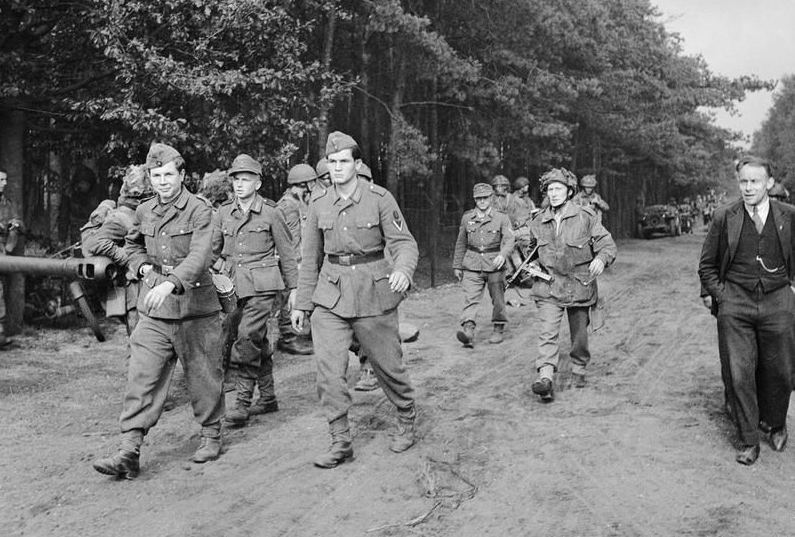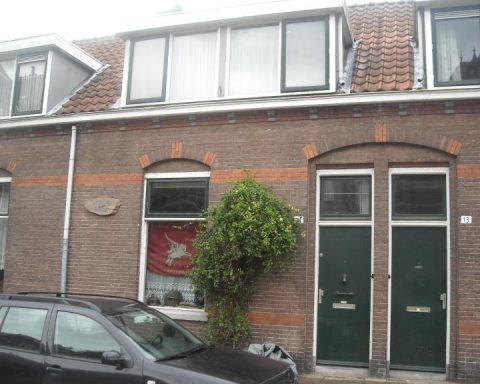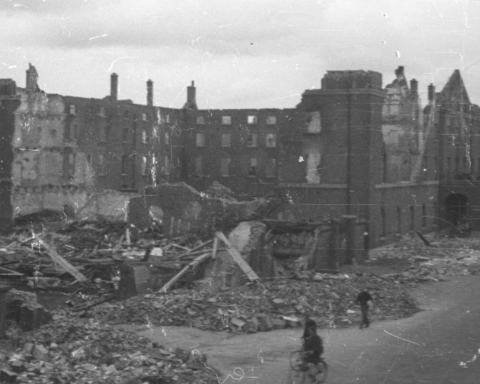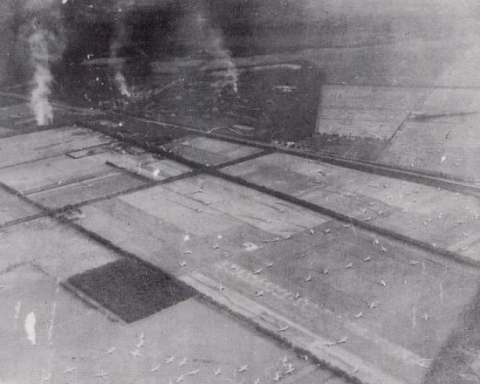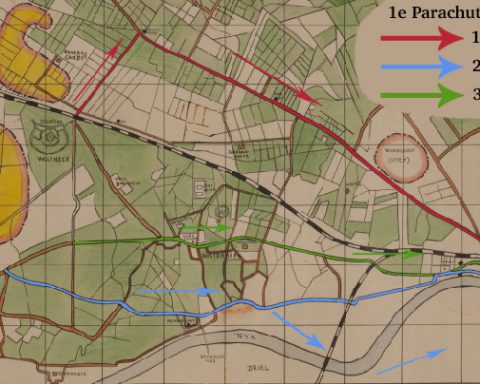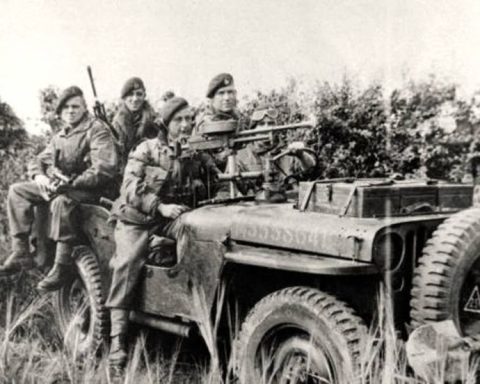After the airborne landings on September 17, three battalions with approximately 2,700 British paratroopers left for Arnhem via three different routes.
1st Battalion , which advanced to Arnhem via the north, came into contact north-east of Wolfheze with the first troops of the 9th SS Armored Division that the Germans had sent to Arnhem.
During the advance to Arnhem via the middle route, 3rd Battalion was seriously hindered by the German defensive line erected between Wolfheze and Oosterbeek by the German Hauptsturmbahnführer Sepp Krafft.
Only the 2nd Battalion led by Lieutenant Colonel John Frost managed to reach Arnhem via the southern route along the Rhine. 2nd Battalion did not encounter major German resistance, but of the three bridges the battalion had to capture, they only managed to secure the north side of the Rhine Bridge.
The advance from the landing areas had been easy. The landing of the paratroopers had gone smoothly. Jeeps, anti-tank guns and other equipment were then unloaded from the gliders. After Colonel Frost blew the signal of departure with his hunting horn, the 2nd Battalion advanced to Arnhem.
The battalion soon encountered German troops. In all likelihood this was a reconnaissance platoon of Sepp Krafft. The Germans were ambushed by the British with their cars. The 30 Germans were killed or captured.
Bill Jukes describes his encounter with a German soldier near Doorwerth:
“It was hard to believe that I was in the middle of the war again. But my problems were nothing compared to the problems of a German soldier who cycled towards us from a side road. he probably didn’t even know we had landed.
When he saw us, he probably thought his last hour had come. He was so shocked that his bike started to wobble and he fell off. We captured him. We loaded him and his bike with our equipment and took him along with us.”
Oosterbeek railway bridge
The battalion progressed quickly. There was a delay when the troops passed through Oosterbeek. Residents of Oosterbeek greeted the British troops warmly with drinks and food, but this slowed the pace of the advance.
Around 6 p.m. in the evening the British reached the railway bridge at Oosterbeek. This was the first of the three bridges that the 2nd Battalion had to capture. There were German anti-aircraft guns on both sides of the bridge, but the six positions were unmanned when the British approached.
A platoon of British was sent across the bridge to secure the bridge, but as the British soldiers ran across the bridge, the Germans blew up the bridge. The capture of the first objective had failed.
A little further on, at the viaduct under the Benedendorpseweg, a German armored vehicle appeared just as the British passed by. It immediately opened fire with its 20-mm cannon and a machine gun. Several Britons were hit.
The armored vehicle then retreated 500 meters to the left, up the hill. The presence of German troops on that hill, De Brink, would seriously hinder the advance of the British the next day. De Brink is located on the west side of Arnhem, close to Oosterbeek.
Around 7:30 PM that evening, the leading troops of the 2nd Battalion entered Arnhem via the Klingelbeekseweg and the Hulkesteinseweg. To avoid contact with any German troops, Colonel Frost led his men through gardens and side streets.
Legend has it that at one point Frost led almost his entire battalion into a garden. Then it went in through the back door and out through the front door. Meanwhile, the British were being verbally abused in Dutch by the elderly resident.
Ship’s bridge
The ship’s bridge at the harbour, near the city center, was the next target of the British. However, the middle part of the pontoon bridge had been moored on the south side of the river by the Germans.
That was a setback for the British, but the Rhine Bridge, a few hundred meters down the road, was up for grabs and the thought was that British troops would later be able to move the middle part of the ship bridge into place via the south bank of the Rhine Bridge.
A small group of soldiers was therefore left on the north side of the ship’s bridge to guard the north side. The rest of the battalion advanced further via the Rhine Quay to the Rhine Bridge further away.
Rhine Bridge
While it was getting dark outside, the first soldiers of the 2nd Battalion reached the Rhine Bridge around 8 p.m.
To their surprise, the British noticed that the troops of the 1st Airborne Reconnaissance Squadron, who should have captured the bridge in their jeeps, were not present. The jeeps had encountered a German ambush earlier that day less than a kilometer after their departure.
The British quietly took up positions in houses around the bridge at dusk. German vehicles occasionally drove on the bridge itself, but they were left alone by the British.
Around 8:45 p.m., the headquarters of the 1st Parachute Brigade also reached the area near the bridge. All in all, about 750 British soldiers managed to reach the Rhine Bridge. This also included a company from the 3rd Battalion.
Most of the 3rd Battalion was stuck at Oosterbeek, but C-Company had been ordered by Colonel Fitch to find a way to Arnhem along the railway. After some fighting, C-Company reached the British position at the bridge around midnight.
Flamethrower
Although the British had now established a defensive line around the north side of the Rhine Bridge, the bridge itself was actually still in German hands. A first, small attack on the German troops present in a bunker on the bridge was repulsed by the Germans.
A second attempt was made around 10 p.m. A flamethrower had been sent to a house closest to the bunker. Sapper Ginger Wilkinson fired at the bunker with his flamethrower, but just as he fired he was tapped on the shoulder, causing him to jerk his flamethrower in surprise.
The sea of flames now went over the bunker. A few wooden sheds just behind them caught fire and the ammunition and gasoline stored there exploded. In any case, the heat of the fires melted the wiring of German explosive charges, preventing the Germans from blowing up the bridge.
Three trucks with German soldiers who carefully drove around the fires from the south were fired upon by the British. Another convoy with Germans arriving from the Arnhem side was also ambushed.
Although the Germans were in control of the southern part of the Rhine Bridge, the 2nd Battalion of the 1st Parachute Brigade had a firm grip on the northern side of the bridge.

